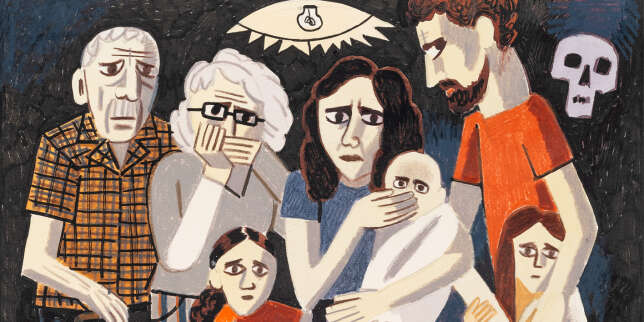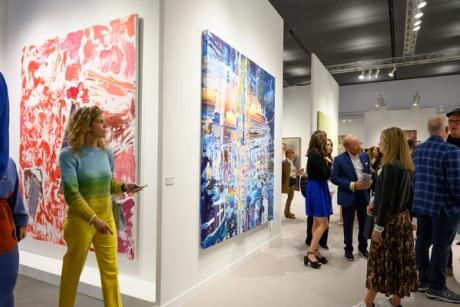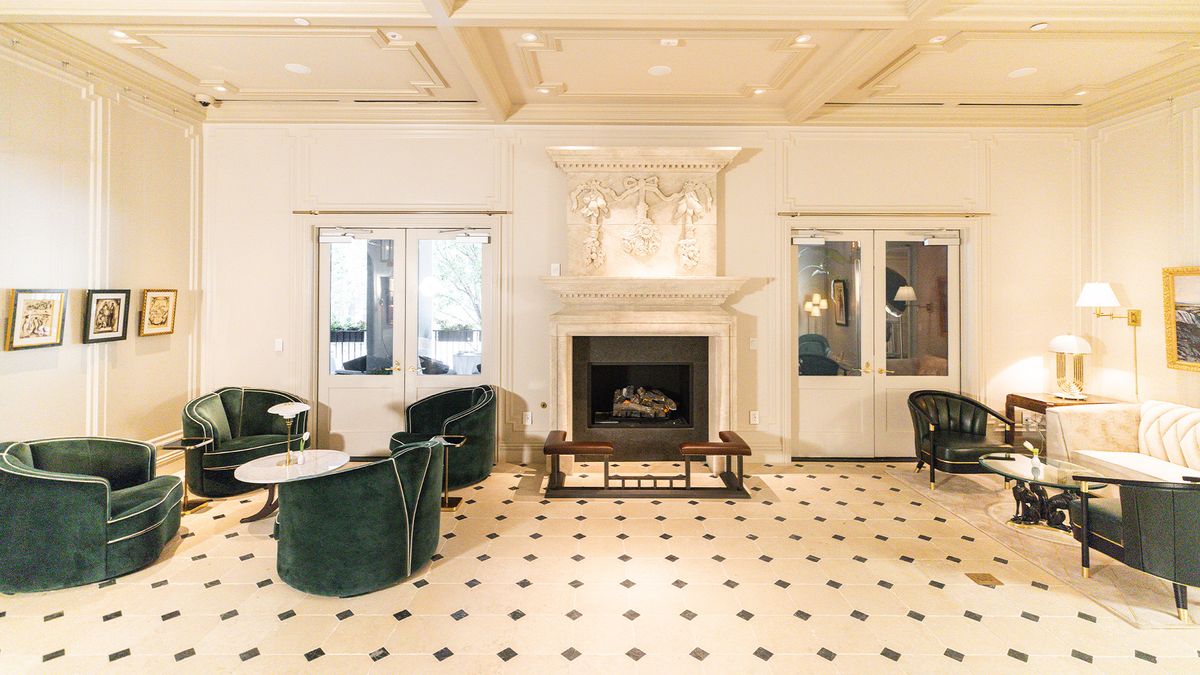Life ’64
2016 - Photography (Photography)
57 7/10 x 45 1/10 inches
José Castrellón
Palo Enceba’o is a project by José Castrellón composed of three photographs, two drawings on metal, and a video work that creates a visual and cultural analogy between the events of January 9th, 1964 in Panama City and the game of palo encebado carried out in certain parts of Panama to celebrate the (US-backed) independence from Colombia. In the game, young men climb a wood post smeared with animal wax to collect a Panamanian flag in return for a bounty. During what is now remembered as Martyrs’ Day, Panamanian students trespassed the fence that separated the American-governed strip of land along the Panama Canal and Panama City to fly a flag and symbolically claim sovereignty over the area that had been turned over to the United States by the Hay–Bunau-Varilla Treaty in 1903. Effectively, the treaty allowed for the construction of the canal and its use in perpetuity by the US in exchange for a sum of money and the backing of Panama’s independence from Colombia. Dubbed as a threat to the sovereignty of the Canal Zone, the American military shot and killed several of the students involved in the incident (declared martyrs) which escalated the already tense relationship between the countries and eventually aided in the negotiations of the Torrijos-Carter Treaties that returned the Canal Zone to Panama. The image of the students climbing up a light post is likened to the palo encebado game. Through the appropriation of a photograph by Stan Weymann published on the cover of TIME Magazine in January 1964 and two original images, the series Palo enceba’o speaks of the ambiguity of the notion of sovereignty.
José Castrellón works with photography, video, found material and language, moving between the conceptual and documentary realms. Through research, he takes history as a point of departure to inquire into and express anthropological and sociological concerns. He identifies with cultural changes and the impact they have on different places, the cultural modification of people and society, as well as the physical transformation of landscapes, brought about by commercialism, colonialism, geopolitical conflict, and interventions. Castrellón practice is concerned with diffusion, hybridization, and exposure to different cultural forms and their imposition, appropriation, or cannibalism, which emerge on the faces of people or the nature of spaces.
Colors:
Related works sharing similar palette

© » KADIST
Ashmina Ranjit
2020While most of Ashmina Ranjit’s work has been large-scale installations, often immersive and site-specific, the series Hair Warp – Travel Through Strand of Universe is a brilliant concentration of both her beliefs and aesthetic...

© » LE MONDE
Au Musée juif de New York, requiem expressionniste pour les victimes du 7 octobre nav_close_menu Cet article vous est offert Pour lire gratuitement cet article réservé aux abonnés, connectez-vous Se connecter Vous n'êtes pas inscrit sur Le Monde ? Inscrivez-vous gratuitement Article réservé aux abonnés « Oct...

© » THEARTNEWSPER
Frieze reveals 68 galleries for its next New York fair Art market Museums & heritage Exhibitions Books Podcasts Columns Technology Adventures with Van Gogh Search Search Frieze New York news Frieze reveals 68 galleries for its next New York fair The smallest Frieze fair returns to the Shed in early May Benjamin Sutton 6 February 2024 Share Visitors to the Victoria Miro stand during Frieze New York 2023 Photo by Casey Kelbaugh / CKA...

© » KADIST
Brian Tripp
2010For many years Tripp has been involved in reviving Karuk ceremonies that had been discontinued for decades, he developed his signature abstract style, based in Karuk design, ceremonial regalia forms, and related cultural and political iconography...

© » ARTS EQUATOR
Everything In Its Right Place: The Body Politic and the Body | ArtsEquator Thinking and Talking about Arts and Culture in Southeast Asia Articles Nabilah Said December 22, 2019 By Nabilah Said (1,400 words, 7-minute read) “You’re a guest, you’re a guest, you’re a guest.” This anodyne version of the Beauty and The Beast song played in my head as I walked through the exhibition The Body Politic and the Body , currently on at ILHAM Gallery in Kuala Lumpur...

© » KADIST
Tarik Kiswanson
2020The artist’s Passings series are hand-sewn works composed of radiological scans of items of clothing loaned by the Tiraz Foundation in Jordan...

© » KADIST
Raymond Pettibon
2000Untitled (Wall Street’s Chosen Few…) is typical of Pettibon’s drawings in which fragments of text and image are united, but yet gaps remain in their signification...

© » ARTS EQUATOR
The working processes of artists: Kavitha Krishnan | ArtsEquator Thinking and Talking about Arts and Culture in Southeast Asia Articles June 8, 2020 Kavitha Krishnan, creative director and co-founder of Maya Dance Theatre, shares about her start in the traditional dance form Bharatanatyam, and how she also incorporates contemporary techniques and practices into the company’s work...

© » HYPERALLERGIC
10 Art Books to Add to Your Shelf This December Skip to content Kareem Khubchandani's Decolonize Drag , Sonya Clark's newest catalogue, and more books we're reading this December (photo Lakshmi Rivera Amin/ Hyperallergic ) If you’re shamefully counting the titles you didn’t get around to reading this year, know that you are not alone...

© » LITHUB
How Alien We Seem: On Being Blind and Obsessed with Photography ‹ Literary Hub Craft and Criticism Fiction and Poetry News and Culture Lit Hub Radio Reading Lists Book Marks CrimeReads About Log In Literary Hub Craft and Criticism Literary Criticism Craft and Advice In Conversation On Translation Fiction and Poetry Short Story From the Novel Poem News and Culture History Science Politics Biography Memoir Food Technology Bookstores and Libraries Film and TV Travel Music Art and Photography The Hub Style Design Sports Freeman’s The Virtual Book Channel Lit Hub Radio Behind the Mic Beyond the Page The Cosmic Library The Critic and Her Publics Emergence Magazine Fiction/Non/Fiction First Draft: A Dialogue on Writing Future Fables The History of Literature I’m a Writer But Just the Right Book Keen On The Literary Life with Mitchell Kaplan New Books Network Read Smart Talk Easy Tor Presents: Voyage Into Genre Windham-Campbell Prizes Podcast Write-minded Reading Lists The Best of the Decade Book Marks Best Reviewed Books BookMarks Daily Giveaway CrimeReads True Crime The Daily Thrill CrimeReads Daily Giveaway Log In How Alien We Seem: On Being Blind and Obsessed with Photography M...

© » HYPERALLERGIC
Artist Rodrigo Valenzuela’s Futuristic Ruins Unveiled in LA Skip to content Rodrigo Valenzuela, "The Underpinning" (2023) (photo Matt Stromberg/ Hyperallergic ) LOS ANGELES — On Saturday afternoon, a crowd gathered at Los Angeles State Historic Park on the edge of Chinatown for the opening of Rodrigo Valenzuela’s new public artwork, commissioned by the local nonprofit Clockshop...

© » KADIST
Tammy Rae Carland
2002Carland’s series of large-format photographs Lesbian Beds (2002) depicts beds that have been recently vacated...

© » ARTS EQUATOR
Podcast 48: Interview with Bilqis Hijjas | ArtsEquator Thinking and Talking about Arts and Culture in Southeast Asia ArtsEquator Viewpoints September 27, 2018 Duration: 32 min In this month’s dance podcast, host Amin Farid chats with Malaysian dance practitioner and writer Bilqis Hijjas on wide-ranging topics from her roles as president of MyDance Alliance and director of the dance programme Rimbun Dahan , to her thoughts on the dance scene in Malaysia, dance criticism, the Southeast Asian identity, and some emerging choreographers and dancers to look out for such as Fanglao Dance Company from Laos, and Malaysia’s Lee Ren Xin...







